Eternal Memories
"This is an exhibit that invites in-depth reading! It presents a vast collection of books, images, manuscripts, and other materials, creating a historical context that allows us to experience the perspectives and emotions of war survivors and researchers, leading to a deeper understanding of history," Mr. Wang from Wuhan said after visiting the exhibit.
On January 1, the "Eternal Memories-Nanjing Massacre Literature Exhibit" was officially opened in the Memorial Hall. The exhibit brings together over 500 historical documents and more than 60 images, presenting the major achievements of the collection, research, and dissemination of historical materials of the Nanjing Massacre over the past ten years since the establishment of National Memorial Ceremony Day for Nanjing Massacre Victims.
Authentic Archival Records from Three Perspectives
Bringing Cross-Border Empathy to Visitors
The exhibit features more than 300 archives of victims, perpetrators, and third parties, alongside over 170 research publicationson the history of Nanjing Massacre, and academic books, popular readings, essays collections, research reports of think tanks, and publications related to the National Memorial Day. It also showcases over 50 translations of historical materials and research works on the Nanjing Massacre, with valuable records collected from Japan, the United States, the United Kingdom, Germany, and other countries and regions.
Zhang Sheng, Dean of School of History, Nanjing University and a researcher at the Institute of National Heritage & International Peace, said: "The materials of the victims, perpetrators, and third parties validate and supplement each other, providing the irrefutable historical evidence of the Nanjing Massacre and forming a deeply painful historical memory. Given the extensive documentation from multiple countries, attempts by Japanese right-wing forces to deny the Nanjing Massacre by discrediting selective records are bound to fail."

Giorgia, a 24-year-old Italian student,at Nanjing Normal University, noted that there is a statue of Minnie Vautrin on the university’s Suiyuan Campus, and the exhibition presents various versions of the Diaries of Minnie Vautri. "These documents let people know about China's trauma and the contribution it made during World War II. It is incredibly difficult to see these materials abroad."
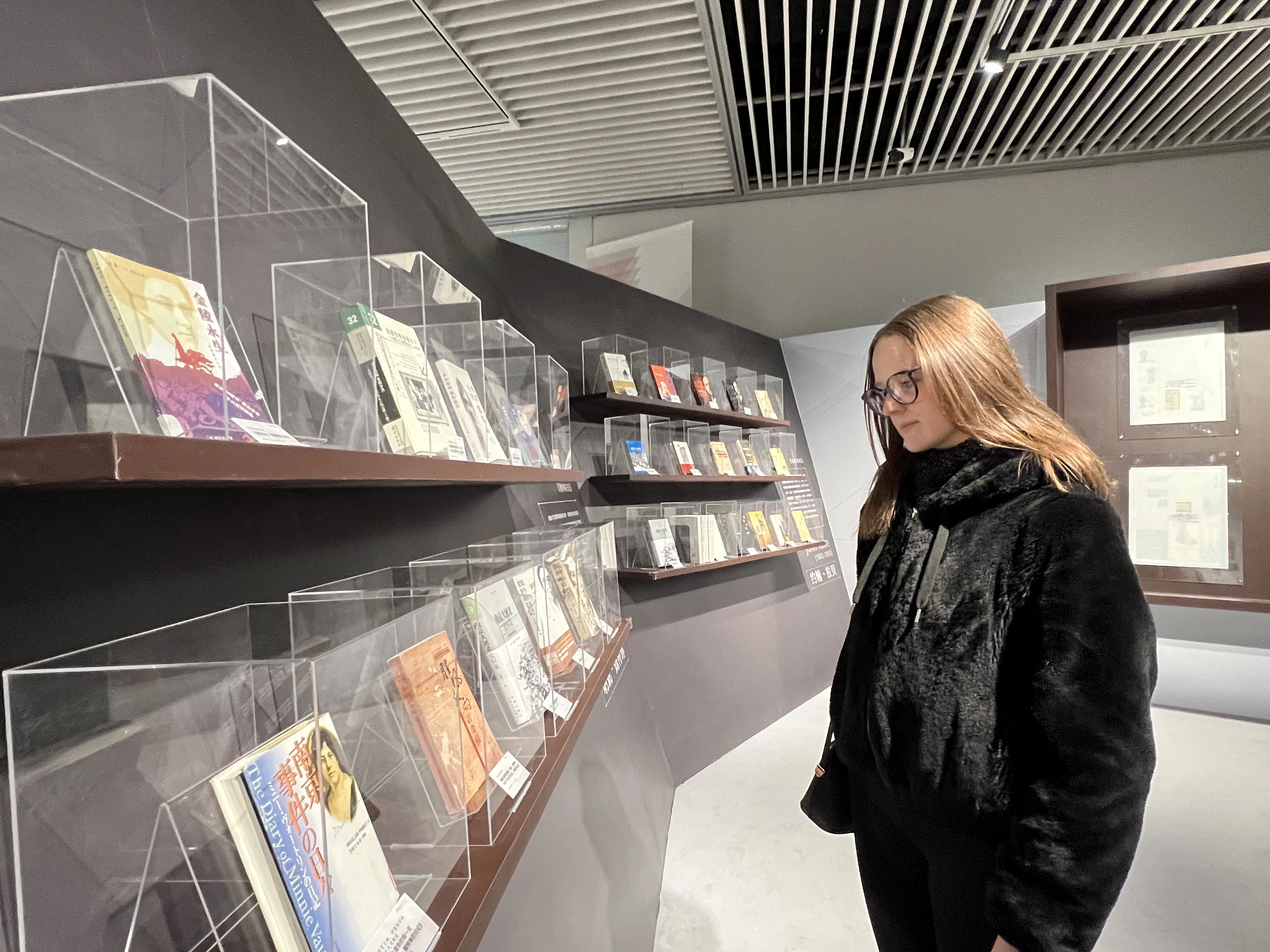
A Digital, Immersive, and Interactive Exhibit
Enhancing Visitor Experience
For the first time, the Memorial Hall has introduced an innovative literature exhibition, emphasizing digital, immersive, and interactive elements to enhance audience engagement. The exhibit is structured into three sections: archival collection, research, and dissemination. Various documents such as archival historical materials, research works, academic journals, popular readings, and translated works are displayed in different categories, and a large number of first-hand documents such as diaries, questionnaires, manuscripts, letters, works, newspapers, and periodicals are displayed, allowing visitors to deepen their understanding of history.
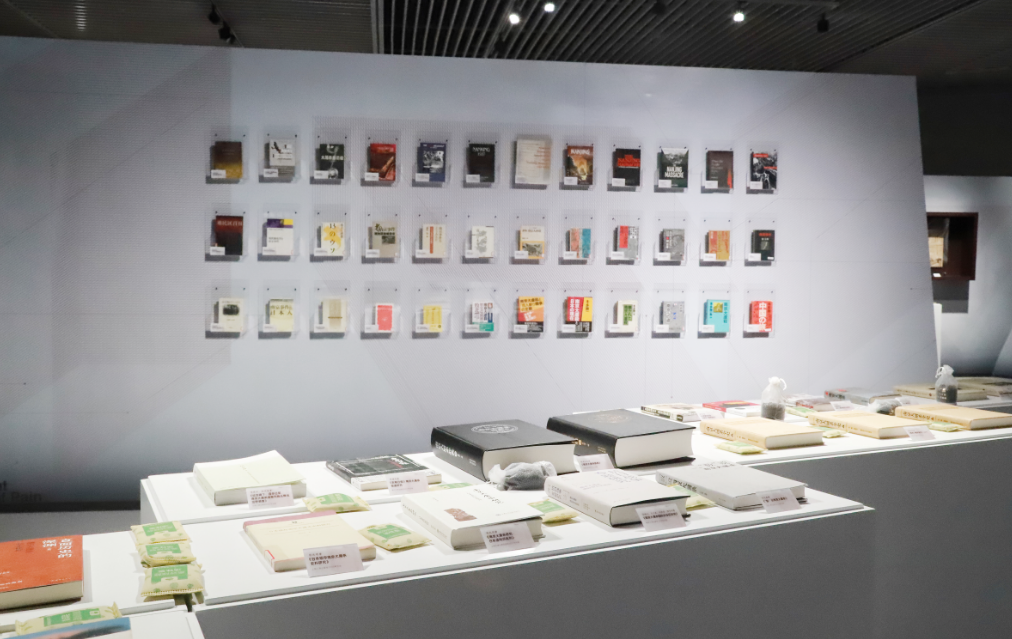
A digital touch screen is set at the entrance of the exhibit, enabling multiple users to interact simultaneously. Visitors can explore documents and engage in "conversations" with historical texts. A key highlight is the electronic archive, which presentsover 100 representative documents from 1937 to the present through a chronological timeline, including more than 110 works and more than 100 expert papers from the Institute of National Heritage & International Peace.
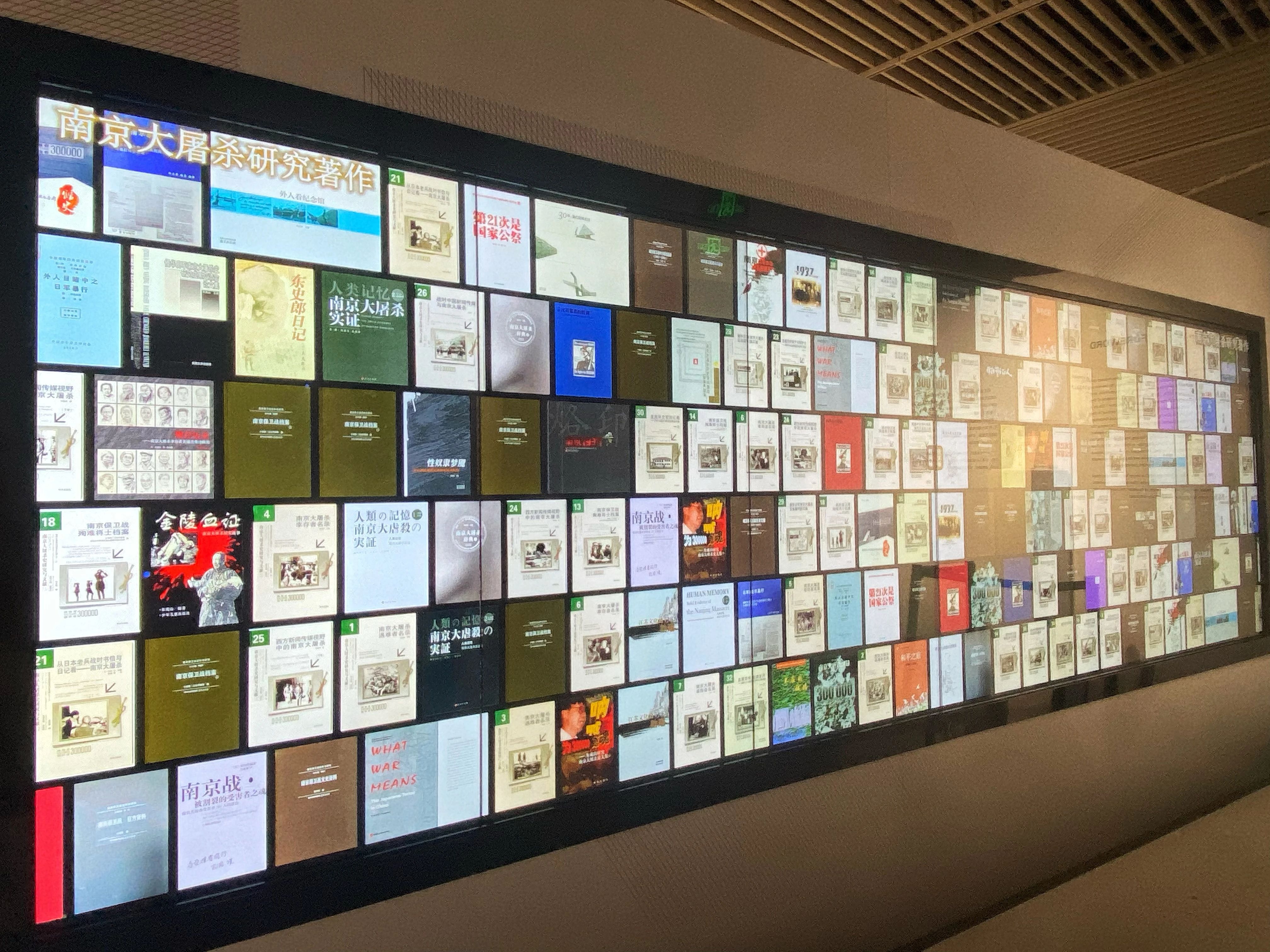
Ms. Wan, who works in Nanjing, visited the Literature Exhibit after exploring the Nanjing Massacre Historical Exhibit. She believes that the Literature Exhibit is a supplement and extension. "The Literature Exhibit focuses on academics and research, and it needs to be extended after understanding the basic historical facts to provide guidance for people to further explore the historical context."
A Comprehensive Collection for All Audiences
"The books on displayare diverse, ranging from documentary literature, biographies to children's picture books, making them suitable for children to read." The popular history book on the Nanjing Massacre attracted the attention of Yi Jincheng, a 10-year-old boy. His mother, Ms. Chen, taking notes of book titles while touring the exhibition, she added:"I would like to purchase more of these books for my child to read later."
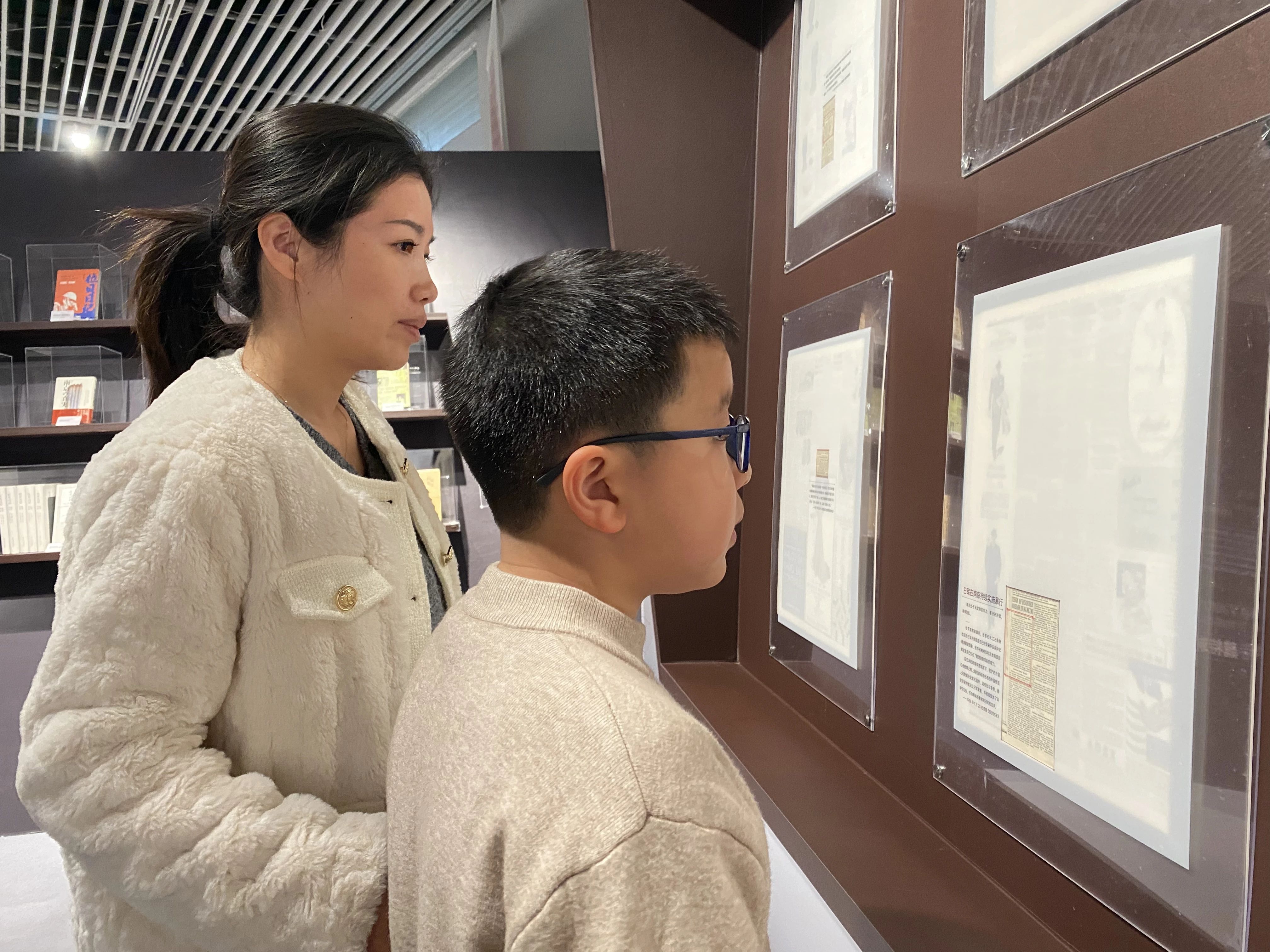
This exhibit provides options for audiences of different ages and countries to learn about the literature of the Nanjing Massacre. The literature categories are complete, including academic research works and journals, as well as accessible readings for the general public and youth audiences. The collection features printed materials such as books, newspapers, diaries, letters, and oral histories, alongside electronic documents available through interactive touchscreens.The exhibition also presents works in multiple languages, including Chinese, English, and Japanese.
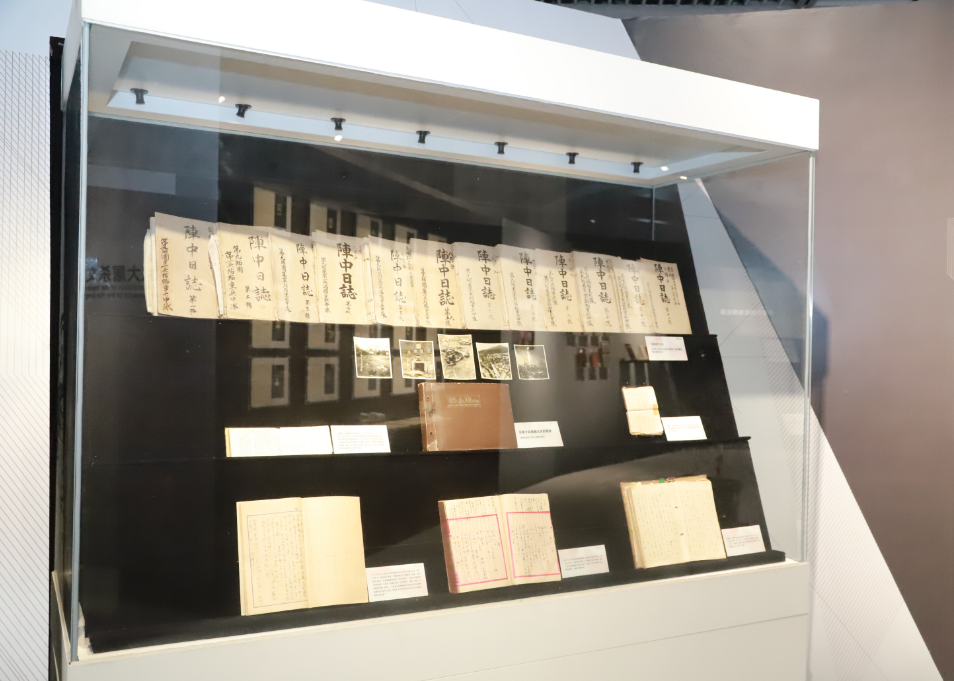
In the first part of the exhibit, there are 20 framed records of victims, survivors, and witnesses of the Nanjing Massacre. These testimonies, written by witnesses in the 1980s and 1990s, implied extreme sadness and attracted many visitors to stop. Chen Huihong, a college student, said: "The self-report of survivors is a very vivid history textbook. A piece of paper is worth a thousand words, and the words on this yellowed stationery are in my heart, which brought me back to that tragic era."
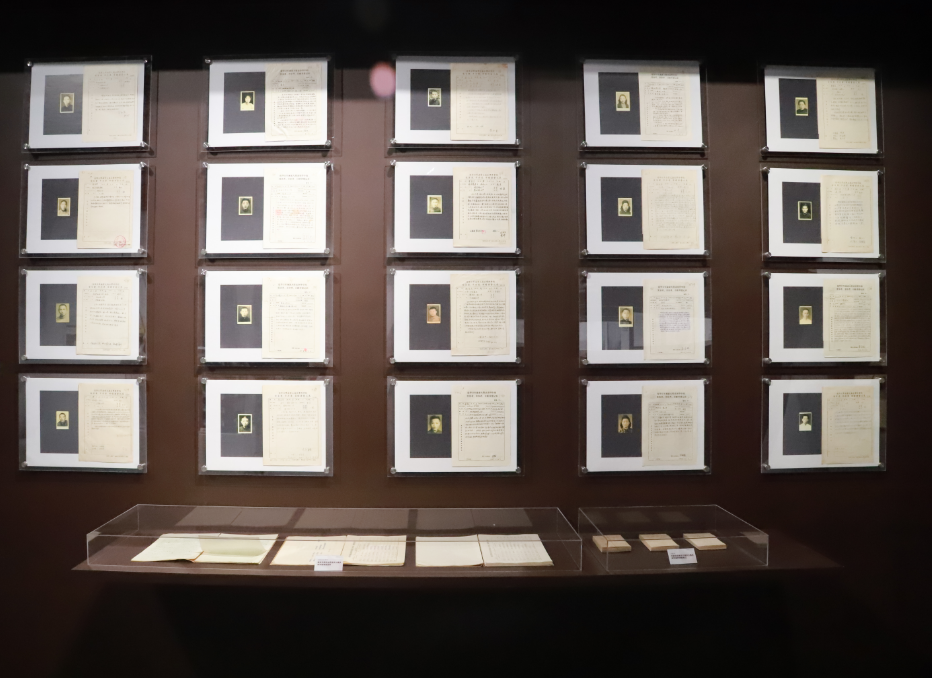
Learning from History, Building a Peaceful Future Together
The memory of history is deeply hidden in the literature and passed down in the hearts of peace-loving individuals. People solidify their memories in historical literatures, and write new literatures in their memories. The idea of remembering history and cherishing peace has been deeply rooted in people's hearts. Ma Zhendu, former director of the Second Historical Archives of China and a researcher at the Institute of National Heritage & International Peace, said: "By understanding the historical facts and materials contained in the literature, the audiences can learn from historical experiences and lessons, and gain insights from history, strengthening their resolve to remember national suffering, honor the deceased, uphold peace, and contribute to national rejuvenation." Yang Xiaming, professor at Jiangsu Administration College and a researcher at the Institute of National Heritage & International Peace, added: "The exhibit conveys the voice of Chinese peopleto remembering history and cherishing peace to the global community. Visitors are inspired by the archival records, prompting them to reflect on how to prevent such tragedies from ever happening again."

